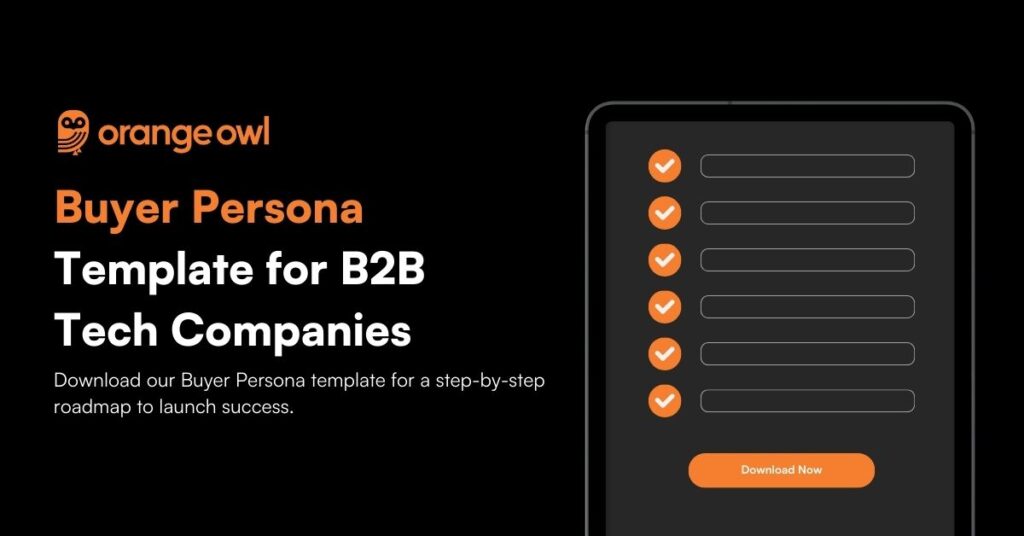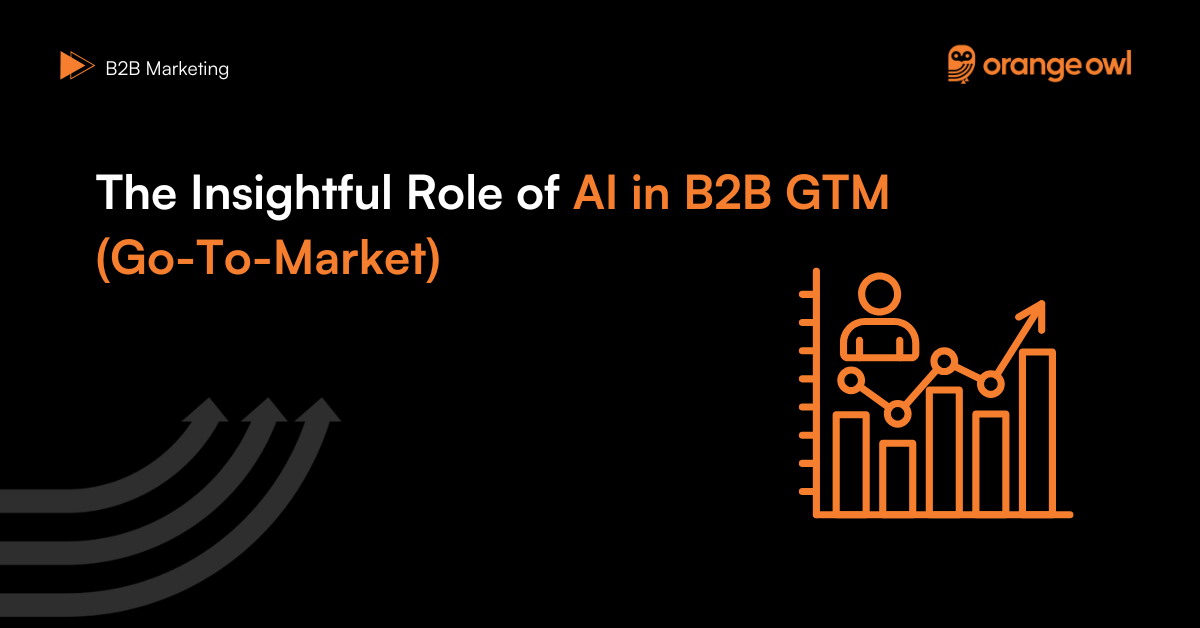GTM Essentials for Identifying and Targeting Your Ideal B2B Market
Vivek Goel
February 1, 2025

Table of Contents
Target market identification is one of the brightest beacons in the huge ocean of business tactics. For every CEO, marketing director, or B2B leader struggling through the rough seas of the market, knowing this core idea is like having a compass in a hurricane. Businesses are not only guided but also given the ability to consciously and precisely navigate their ships toward the shores of prosperity.
GTM: Why Target Market Identification Matters
Before delving into the intricacies of target market identification, it’s essential to grasp why it holds such significance for businesses of all sizes and industries. At its core, target market identification enables businesses to:
- Focus Resources Effectively: By identifying specific segments of the population that are most likely to purchase their products or services, businesses can concentrate their resources on reaching and engaging with these potential customers.
- Tailor Marketing Efforts: Understanding the demographics, preferences, and behaviors of their target market allows businesses to tailor their marketing messages and strategies to resonate with potential customers effectively.
- Maximize ROI: By targeting the right audience with personalized marketing campaigns, businesses can maximize their return on investment (ROI) by minimizing wastage and ensuring that their efforts are directed towards individuals who are most likely to convert.
- Drive Product Development: Insights gained from target market identification can inform product development efforts, helping businesses create offerings that align closely with the needs and preferences of their target audience.
The Target Market Identification Process
Now that we’ve established the importance of target market identification, let’s explore the step-by-step process of identifying and understanding your target market:

- Market Research: The journey begins with comprehensive market research. This involves analyzing industry reports, studying competitor offerings, and gathering insights into emerging trends and unmet needs within the market.
- Demographic Analysis: Segmenting the target market based on demographics such as age, income, location, and occupation provides a foundational understanding of who your potential customers are.
- Psychographic Segmentation: Delving deeper into psychographics allows businesses to understand the values, attitudes, lifestyles, and pain points of their target audience. This insight enables more personalized and resonant marketing messaging.
- Competitor Analysis: Studying competitors’ target markets can uncover gaps or underserved segments within the market. Analyzing competitors’ strategies can also provide valuable insights into effective approaches for reaching and engaging with the target audience.
- Customer Feedback: Actively listening to customer feedback through surveys, interviews, and social media interactions provides invaluable insights into customer preferences, challenges, and satisfaction levels.
- Ideal Customer Profiles (ICPs) and Personas: Developing detailed ideal customer profiles and personas helps crystallize the characteristics, preferences, and behaviors of the most valuable segments within the target market.
- Finalizing Target Markets: Based on research and insights gathered, businesses can finalize their target markets, focusing on segments that offer significant growth potential and align closely with their unique value proposition.
Utilizing Data and Analytics for Target Market Identification
In today’s digital age, businesses have access to a wealth of data and analytics tools that can streamline the target market identification process:
- Website Analytics: Leveraging website analytics tools allows businesses to gain insights into the demographics, behaviors, and preferences of their website visitors. This data can inform target market identification and marketing strategies.
- Point-of-Sale Analytics: Analyzing point-of-sale data provides valuable information about customer purchasing patterns, preferences, and interactions with the brand.
- Social Media Insights: Monitoring social media platforms provides real-time insights into consumer sentiment, preferences, and interactions. Social media analytics tools offer robust data on audience demographics, engagement metrics, and content performance.
- Mass Marketing Campaigns: Launching mass marketing campaigns can help businesses gather data on consumer responses and preferences, aiding in target market identification and segmentation efforts.
Key Considerations for Target Market Identification
As businesses embark on the target market identification process, several key considerations should be kept in mind:
- Define Your Offer: Clearly defining your product or service offering is essential for identifying the target market it serves. Understanding the problem your offering solves and its unique value proposition is fundamental to target market identification.
- Track Data: Leveraging data-driven analytics tools and strategies enables businesses to gather actionable insights into their target market’s demographics, behaviors, and preferences.
- Define Your Ideal Audience: Developing detailed profiles of your ideal audience allows for more precise target market identification and segmentation. Asking critical questions about who your customers are, what motivates them, and where they are located helps refine target market profiles.
- Profile Your Ideal Client: Utilizing market segmentation techniques such as demographic, psychographic, behavioral, and geographic segmentation helps profile the ideal client and tailor marketing efforts accordingly.
- Conduct Interviews: Engaging with former, current, and ideal customers through interviews provides qualitative insights into their preferences, challenges, and purchasing behaviors.
- Research Competitors’ Targets: Analyzing competitors’ target markets and marketing strategies offers valuable benchmarking insights and helps identify untapped market segments.
Conclusion
In conclusion, in the dynamic realm of business, understanding your target market is not just a choice but a necessity. It’s the compass that guides your journey, the map that charts your course, and the key that unlocks the door to success. By integrating go-to-market (GTM) strategies into the journey of target market identification with diligence and determination, B2B leaders can navigate the complexities of the market landscape with confidence, steering their organizations toward growth, prosperity, and enduring success.
Frequently Asked Questions (FAQs) about GTM Essentials for Identifying and Targeting your Ideal B2B Market:
Target market identification allows B2B businesses to focus their resources effectively, tailor marketing efforts to resonate with potential customers, maximize ROI, and drive product development. It ensures that marketing and sales efforts are directed towards individuals or companies most likely to convert.
The steps include conducting market research, performing demographic and psychographic segmentation, analyzing competitors, gathering customer feedback, developing ideal customer profiles and personas, and finalizing target markets based on the insights gathered.
Market research provides valuable data on industry trends, competitor offerings, and emerging market needs. It helps businesses understand the landscape, identify opportunities, and uncover unmet needs that can be addressed by their products or services.
Demographic segmentation involves dividing the market based on measurable characteristics such as age, income, location, and occupation. Psychographic segmentation delves deeper into the values, attitudes, lifestyles, and pain points of the target audience, providing a more nuanced understanding of their preferences and behaviors.
Competitor analysis helps identify gaps or underserved segments within the market by studying competitors’ target markets. It provides insights into effective strategies for reaching and engaging the target audience and highlights areas where competitors may be lacking.
ICPs and personas are detailed representations of the most valuable segments within the target market. They include characteristics, preferences, and behaviors of ideal customers, helping businesses create more personalized and effective marketing strategies.
Data and analytics tools such as website analytics, point-of-sale data, and social media insights provide valuable information on customer demographics, behaviors, and preferences. This data helps businesses refine their target market identification and develop data-driven marketing strategies.
Key considerations include clearly defining the product or service offering, tracking data, defining the ideal audience, profiling the ideal client using segmentation techniques, conducting interviews with customers, and researching competitors’ target markets.
Customer feedback gathered through surveys, interviews, and social media interactions provides qualitative insights into customer preferences, challenges, and satisfaction levels. This feedback helps businesses understand customer needs better and refine their target market profiles.
Understanding the target market ensures that GTM efforts are precisely aligned with market needs. It allows for the creation of tailored marketing messages, more effective resource allocation, and the development of products and services that resonate with the target audience, leading to higher conversion rates and business growth.




